Logfia arizonica, Arizona Cottonrose
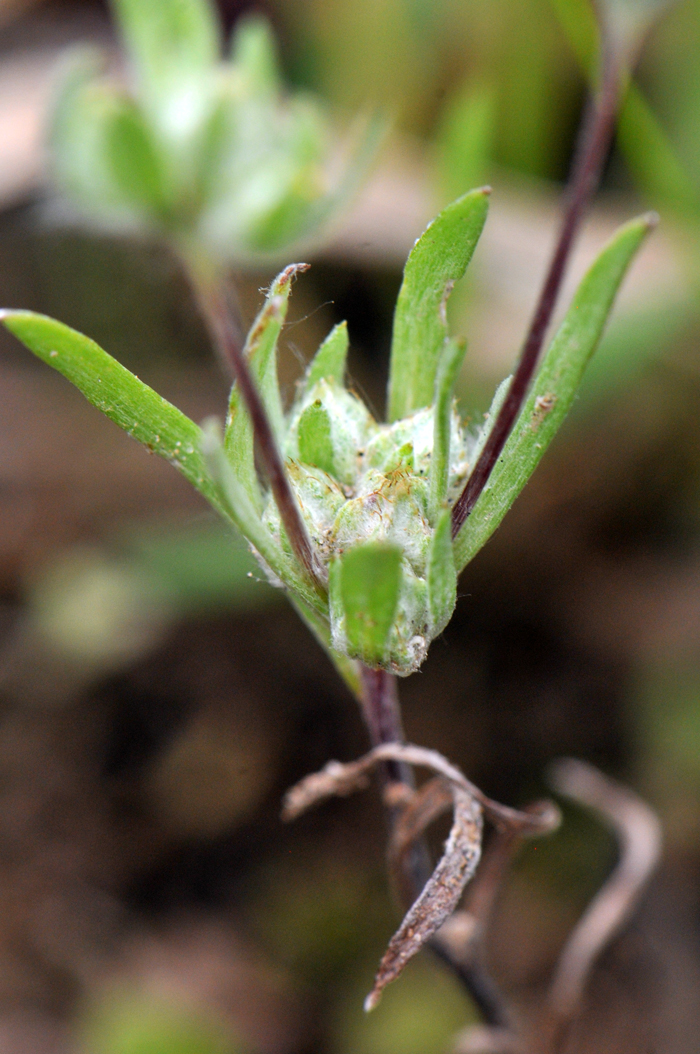
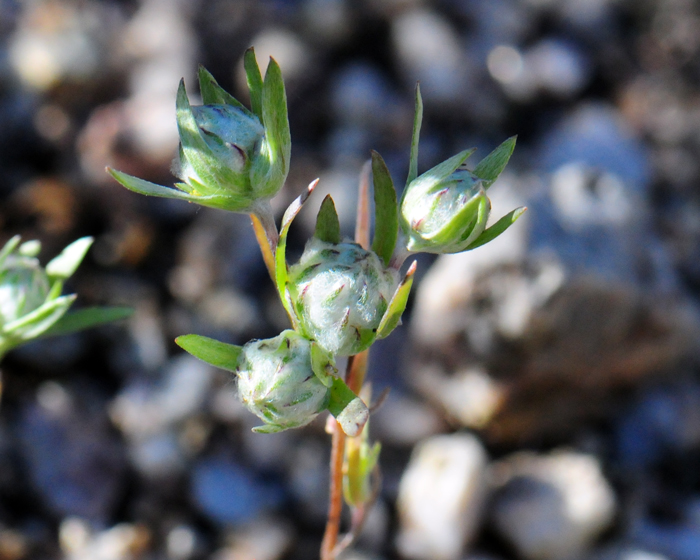
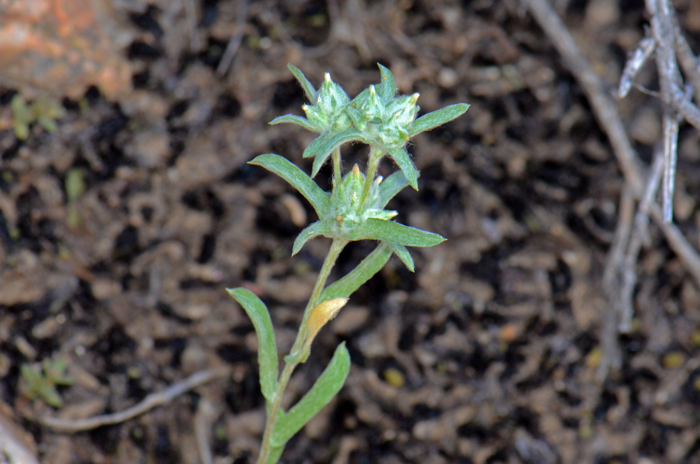
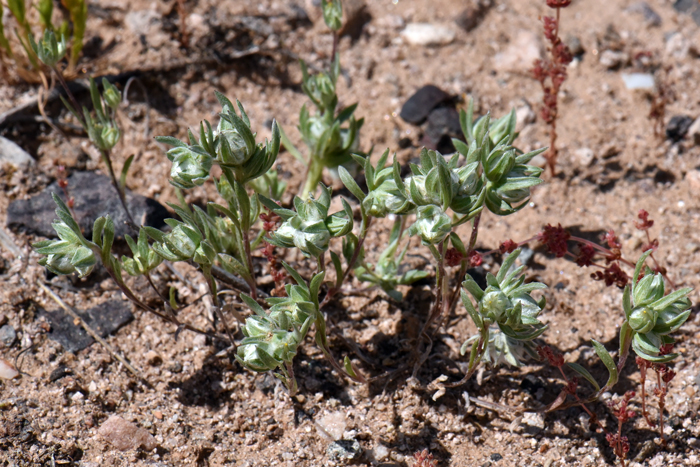
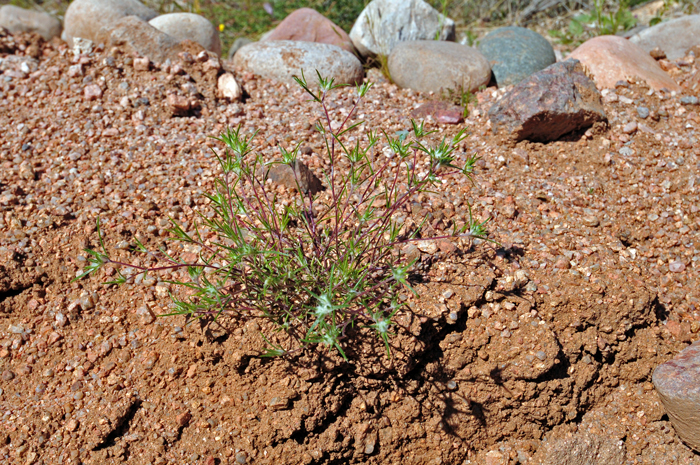
Scientific Name: Logfia arizonica
Common Name: Arizona Cottonrose
Also called: Arizona False Cotton-Rose, Arizona Fluffweed
Family: Asteraceae, Sunflower Family
Synonyms: (Filago arizonica, Oglifa arizonica)
Status: Native
Duration: Annual
Size: ¾ to 4 inches (2-10 cm) or more; 7 inches (20 cm)
Growth Form: Forb/herb; 1 or more stems, often spreading; note dark purplish stems in photo above; stems generally smooth or becoming so; plants covered in dense, soft, often matted short hairs looking a little like cobwebs.
Leaves: Green to grayish-green; leaves narrow, linear; leaves arranged alternately on slender stems; note in the photos above the leaves extend beyond flowering head clusters.
Flower Color: Light yellow; heads small, 3 or more compact roundish (globose) heads per group covered with whitish cotton-like hairs; fruit is a cypsela with a pappus.
Flowering Season: February or March to April, May or June
Elevation: 1,000 to 2,500 feet (305-762 m)
Habitat Preferences: Lower desert areas, Creosote Bush communities, moist areas, sandy and gravelly washes, mesas, rocky hillsides and rocky places, clay soils and roadsides; coastal slopes in California.
Recorded Range: A rare plant in the United States it is found only in southwest Arizona and southern and southwest California. It is also native to northern Baja California and northwest Mexico.
North America & US County Distribution Map for Logfia arizonica.
North America species range map for Arizona Cottonrose, Logfia arizonica:
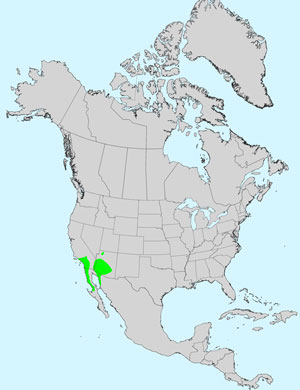
U.S. Weed Information: Unknown
Invasive/Noxious Weed Information: Unknown
Wetland Indicator: Unknown
Threatened/Endangered Information: Unknown
The genus Logfia was published by Alexandre Henri Gabriel de Cassinni, (1781-1832), in 1819.
In the Southwestern United States: Arizona has 3 species of Logfia California has 5 species, Nevada and Texas each have 2 species, New Mexico and Utah each have 1 species. Data approximate and subject to revision.
Comments: Arizona Cottonrose is species of daisy that if not examined carefully might confuse it with Fluff Grass, Erioneuron pulchellum, a true member of the Grass Family (Poaceae) which it superficially resembles.
Arizona Cottonrose or Fluffweed has an interesting history of botanists cleverly using anagrams when renaming a species. Originally Arizona Cottonrose was placed in genus Oglifa (Oglifa arizonica). Botanists changed that classification to the new genus Filago (Filago arizonica), which is an anagram of Oglifa. Arizona Cottonrose was changed a third time using the same letters in the original name to Logfia. - see updated information below.
According to Michael L. Charters, author and compiler of California Plant Names: Latin and Greek Meanings and Derivations “The genus is undergoing some revision, and the names Logfia and Oglifa, both anagrams, are in the running to take part of the original genus. The author of Filago has apparently decided to forgo the use of the name Oglifa in favor of Logfia, with only a single species remaining in Filago”.
The genus Logfia was published by Alexandre Henri Gabriel de Cassinni, (1781-1832), in 1819.
The species epithet “arizonica” )arizon'ica:) of or from Arizona.

